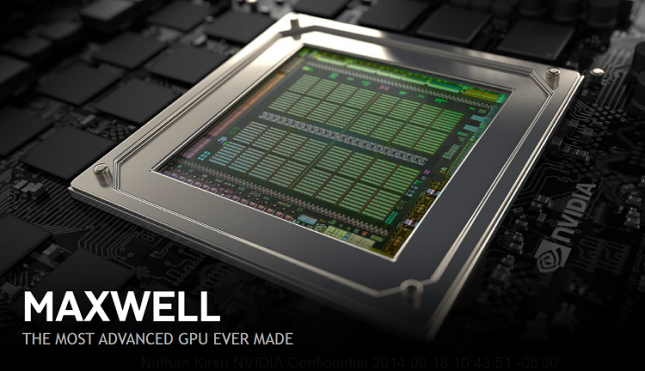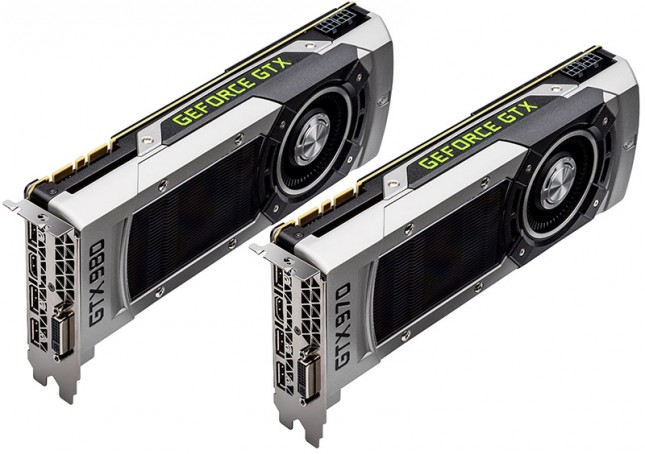NVIDIA GeForce GeForce GTX 980 Maxwell Video Card Review
NVIDIA Maxwell Brings GeForce GTX 980
Earlier this year NVIDIA gave us our first look at the Maxwell GPU architecture with the release of the GeForce GTX 750 Ti video card. We were thoroughly impressed by the little card and have been waiting for more than half a year for the ‘larger’ GPU cores to come to market. NVIDIA is ready to release the latest Maxwell GPU, GM204, that will be featured on the new GeForce GTX 980 and GeForce GTX 970 video cards that are coming to market today. NVIDIA claims that Maxwell is the most advanced GPU ever made and began development of Maxwell in 2011. NVIDIA had three main design goals when it came to the GM204 Maxwell GPU:
- Extraordinary Gaming Performance for the Latest Displays (4K and beyond as well as the emerging Virtual Reality displays)
- Incredible Energy Efficiency (designed to be 2x the performance/watt of Kepler powered GeForce GPUs)
- Dramatic Leap Forward in Lighting With Voxel Global Illumination or VXGI for short (fully dynamic global illumination at playable frame rates)
NVIDIA believes that they accomplished their three key goals and then some with the GeForce GTX 980 video card.
The NVIDIA GeForce GTX 980 4GB video card 2048 CUDA cores with a base clock speed of 1126MHz, a boost clock of 1216MHz and 4GB of GDDR5 memory on a 256-bit bus clocked at 7000MHz (effective). The GeForce GTX 970 has 1664 CUDA Cores with a base clock of 1050MHz, a boost clock of 1178MHz and 4GB of GDDR5 memory that also runs on a 256-bit memory bus that is clocked at 7000MHz (effective). NVIDIA basically lowered the core clock speeds of the card and enabled 13 SMX units instead of all 16 found on the GTX 980. Both cards use the same GM204 and are not differentiated by features, so both will support Dynamix Super Resolution, VXGI and MFAA. We’ll go over those new features when as we move along.
What will the new GeForce GTX 980 and GTX 970 cost?
GeForce GTX 980: $549
GeForce GTX 970: $329
GeForce GTX 760: $219
The GeForce GTX 980 comes in at $549 and the GeForce GTX 970 comes in at $329. The GeForce GTX 970 has 19% fewer CUDA cores and costs 40% less than the GTX 980, so it looks like the GTX 970 might be the perfect solution for those that want a powerful new card, but don’t want to pay for the flagship model. NVIDIA also slashed the suggested retail price of the GeForce GTX 760 down to $219, but other than that, there are no other changes to any other products.It should be mentioned that the NVIDIA GeForce GTX 780 Ti, GTX 780 and GTX 770 have all been discontinued and will no longer be available once the cards in the retail channel are sold.
| GTX 980 | GTX 780 | GTX 680 | GTX 580 | |
| Microarchitecture | Maxwell | Kepler Refresh | Kepler | Fermi |
| Stream Processors | 2048 | 2304 | 1536 | 512 |
| Texture Units | 128 | 192 | 128 | 64 |
| ROPs | 64 | 48 | 32 | 48 |
| Core Clock | 1126MHz | 863MHz | 1006MHz | 772MHz |
| Shader Clock | N/A | N/A | N/A | 1544MHz |
| Boost Clock | 1216MHz | 900MHz | 1058MHz | N/A |
| GDDR5 Memory Clock | 7,000MHz | 6,008MHz | 6,008MHz | 4,008MHz |
| Memory Bus Width | 256-bit | 384-bit | 256-bit | 384-bit |
| Frame Buffer | 4GB | 3GB | 2GB | 1.5GB |
| FP64 | 1/32 FP32 | 1/24 FP32 | 1/24 FP32 | 1/8 FP32 |
| Memory Bandwidth | 224 | 288 | 192.3 | 192.4 |
| TFLOPS | 5 | 4 | 3 | 1.5 |
| GFLOPS/Watt | 30 | 15 | 15 | 6 |
| TDP | 165W | 250W | 195W | 244W |
| Transistor Count | 5.2B | 7.1B | 3.5B | 3B |
| Manufacturing Process | TSMC 28nm | TSMC 28nm | TSMC 28nm | TSMC 40nm |
| Release Date | 09/2014 | 05/2013 | 03/2012 | 11/2010 |
| Launch Price | $549 | $649 | $499 | $499 |
So, how does the GeForce GTX 980 stack up to the the other flagship models that NVIDIA has released over the past four years? It looks pretty good on paper and if you still have a GeForce GTX 580 or GTX 680 video card it might be time to consider upgrading to get a nice boost in performance. The TFLOPS has gone from 1.5 on the GTX 580 to 5 on the GTX 980, while the GFLOPS to Watt performance ratio has gone from 6 to 30! NVIDIA really has done a wonderful job over the past four years with regards to improving the performance per watt.
Let’s move along and take a look at the Maxwell GPU architecture and get to some benchmark results!



